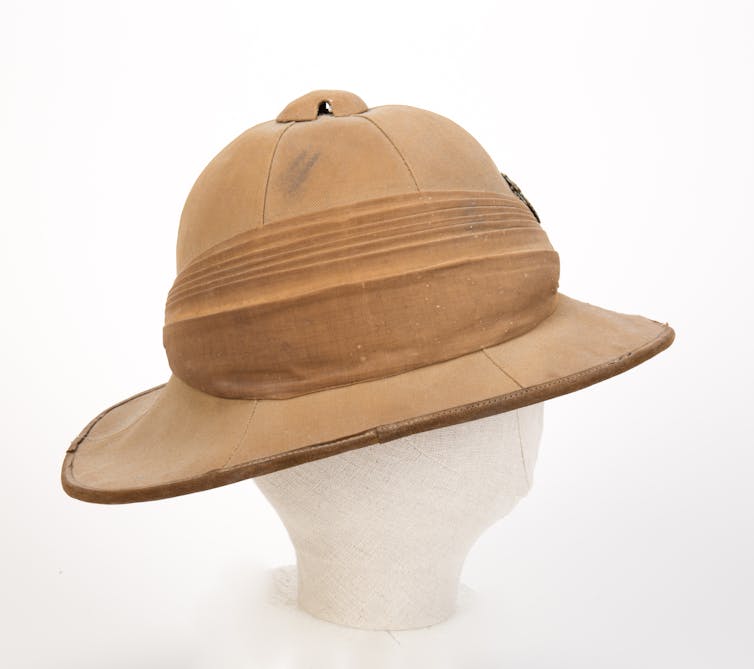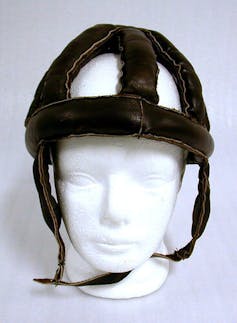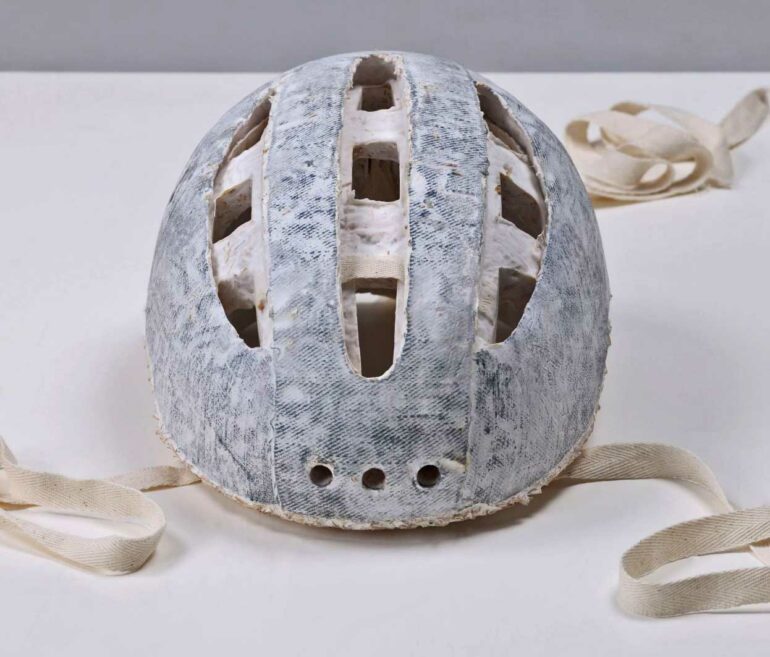Imagine – it’s the mid-1800s, and you’re riding your high-wheeled, penny-farthing bicycle down a dusty road. Sure, it may have some bumps, but if you lose your balance, you’re landing on a relatively soft dirt road. But as the years go by, these roads are replaced with pavement, cobblestones, bricks or wooden slats. All these materials are much harder and still quite bumpy.
As paved roads grew more common across the U.S. and Europe, bicyclists started to suffer gruesome skull fractures and other serious head injuries during falls.
As head injuries became more common, people started seeking out head protection. But the first bike helmets were very different than helmets of today.
I’m a materials engineer who teaches a course at Georgia Tech about materials science and engineering in sports. The class covers many topics, but particularly helmets, as they’re used in many different sports, including cycling, and the materials they’re made of play an important role in how they work. Over the decades, people have used a wide variety of materials to protect their heads while biking, and companies continue to develop new and innovative materials.
In the beginning, there was the pith helmet.
Pith helmets
The first head protection concept introduced to the biking world was a hat made from pith, which is the spongy rind found in the stem of sola plants, aeschynomene aspera. Pith helmet craftsmen would press the pith into sheets and laminate it across dome-shaped molds to form a helmet shape. Then, they’d cover the hats in canvas as a form of weatherproofing.

Hats made out of pith were used by militaries as well as for head protection while biking.
Auckland Museum, CC BY-SA
Pith helmets were far from what we would consider a helmet today, but they persisted until the early 20th century, when bicycle-racing clubs emerged. Since pith helmets offered little to no ventilation, the racers began to use halo-shaped leather helmets. These had better airflow and were more comfortable, although they weren’t much better at protecting the head.

Leather strip bike helmets were made in the 1930s.
Museums Victoria, CC BY-SA
Leather halo helmets
The initial concept for the halo helmet used a simple leather strip wrapped around the forehead. But these halo helmets quickly evolved, as riders arranged additional strips longitudinally from front to back. They wrapped the leather bands in wool.
For better head protection, the helmet makers then started adding more layers of leather strips to increase the helmet’s thickness. Eventually, they added different materials such as cotton, foam and other textiles into these leather layers for better protection.
While these had better airflow than the pith hats, the leather “hairnet” helmets continued to offer very little protection during a fall on a paved surface. And, like pith, the leather helmets degraded…



